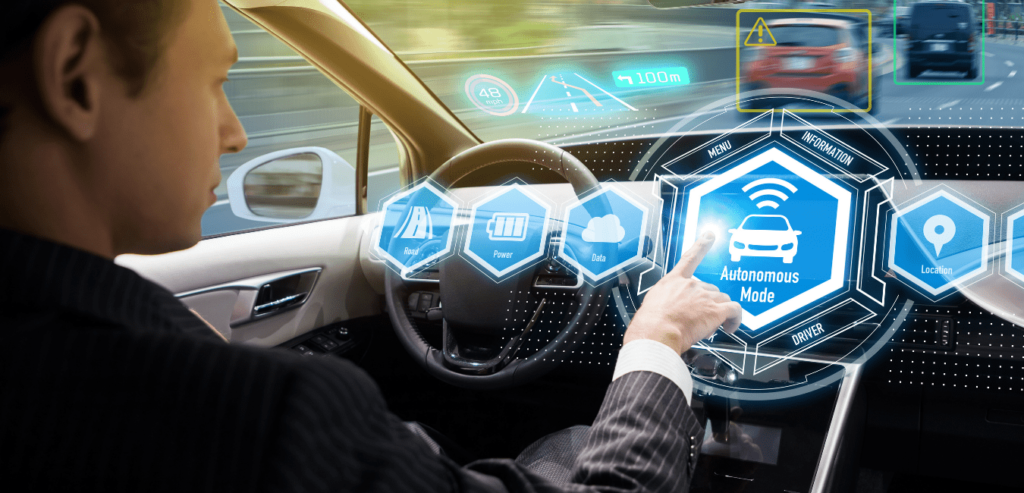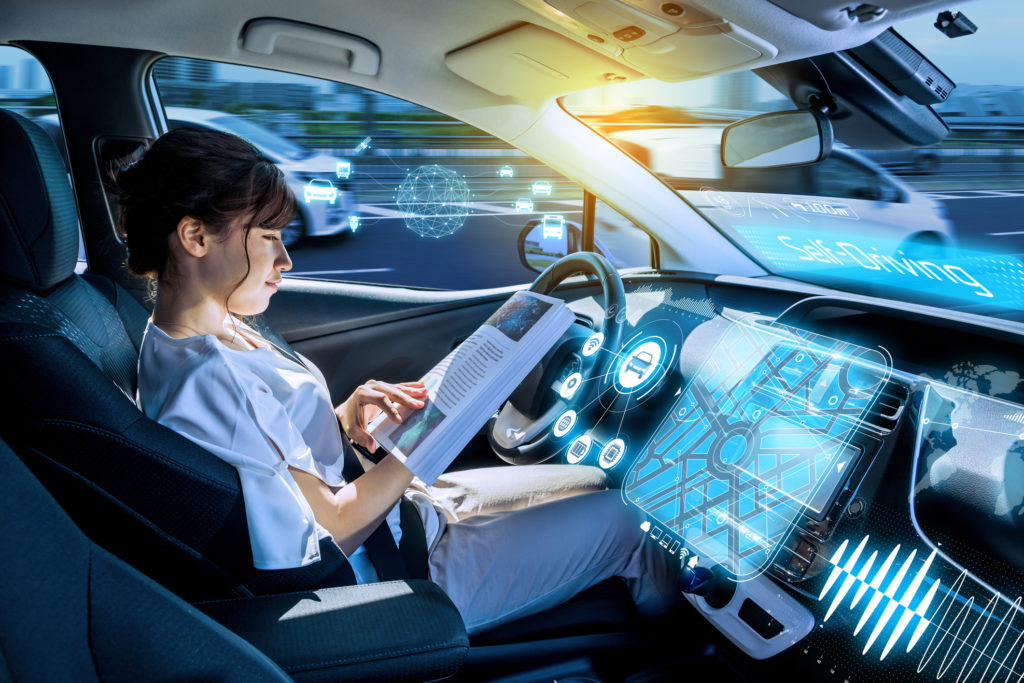The landscape of transportation in the United States is undergoing a seismic shift, u.s. with autonomous driving technology leading the charge. From bustling city streets to sprawling highways, self-driving cars are no longer a distant dream but a tangible reality, as showcased at recent auto shows across the country. These events, including the prominent Los Angeles Auto Show and the New York International Auto Show, have become platforms for automakers and tech companies to unveil cutting-edge models and innovations in autonomous driving. With advancements in artificial intelligence, sensor technology, and vehicle-to-vehicle communication, the U.S. is at the forefront of this automotive revolution. This article explores the latest developments in autonomous driving technology, highlights new models debuted at auto shows, and discusses the implications for the future of travel in America.

A New Era of Autonomous Driving
Autonomous driving technology has progressed rapidly in recent years, driven by the promise of safer roads, reduced traffic congestion, and enhanced mobility. At the core of this transformation are advanced driver-assistance systems (ADAS) and fully autonomous systems, which rely on a combination of cameras, radar, lidar, and AI to navigate roads without human intervention. Companies like Tesla, Waymo, and General Motors’ Cruise division are pushing the boundaries, while traditional automakers such as Ford and Toyota are integrating autonomous features into their latest models.
At the 2024 Los Angeles Auto Show, held in November, several manufacturers showcased vehicles with Level 2+ and Level 3 autonomous capabilities. Level 2+ systems, like those found in the 2026 Toyota RAV4, include advanced lane centering and adaptive cruise control, allowing drivers to briefly take their hands off the wheel while remaining responsible for the vehicle. Meanwhile, Level 3 systems, such as Mercedes-Benz’s Drive Pilot, enable hands-free driving under specific conditions, marking a significant step toward full autonomy. These advancements reflect a broader trend: automakers are not only refining existing technologies but also preparing for a future where cars drive themselves entirely.
New Models Steal the Spotlight
Auto shows in the U.S. have become critical venues for unveiling autonomous-ready vehicles, drawing crowds eager to see the future of driving. At the New York International Auto Show in April 2025, General Motors debuted an updated Cadillac Lyriq with enhanced Level 2+ capabilities, including improved lane-keeping and traffic-aware cruise control. The Lyriq’s system uses real-time data from traffic patterns and weather conditions to optimize driving decisions, showcasing how AI is transforming the driving experience.

Similarly, Ford introduced the 2026 Mustang Mach-E with an upgraded BlueCruise system at the Los Angeles Auto Show. BlueCruise now supports hands-free driving on over 130,000 miles of pre-mapped highways in the U.S., a significant expansion from its previous iterations. Ford’s commitment to autonomous technology is evident in its partnership with Argo AI, which continues to refine the software powering these systems. Attendees at the show were impressed by demonstrations of the Mach-E navigating complex urban environments, highlighting its potential to reduce driver fatigue.
Tesla, a pioneer in autonomous driving, made headlines at the 2025 Consumer Electronics Show (CES) in Las Vegas, which doubled as an auto show for tech-focused vehicles. The company showcased its next-generation Model Y, equipped with an advanced version of Full Self-Driving (FSD) software. According to posts on X, the Model Y was spotted driving autonomously for 1.5 miles through traffic and construction zones near Tesla’s Giga Texas facility, demonstrating the capabilities of its end-to-end generative AI model. Tesla’s CEO, Elon Musk, announced plans to launch a robotaxi trial in Austin, Texas, by June 2025, with production of a dedicated robotaxi model slated for 2026. This move positions Tesla as a direct competitor to Waymo, which currently leads the robotaxi market with over 250,000 paid rides per week in cities like San Francisco and Phoenix.
Safety and Public Perception
Safety remains a top priority as autonomous vehicles become more prevalent. A recent peer-reviewed study by Waymo, published in Traffic Injury Prevention, analyzed 56.7 million miles driven by its autonomous vehicles in cities like Austin and Los Angeles. The study found that Waymo’s self-driving cars significantly reduced crashes and injuries compared to human drivers, reinforcing the potential for autonomous technology to enhance road safety. However, challenges persist. In May 2025, Waymo recalled 1,200 vehicles due to software issues that caused collisions with roadway barriers, highlighting the need for rigorous testing and refinement.
Public perception of autonomous vehicles is mixed. A 2024 YouGov poll indicated that 37% of Americans feel uneasy about riding in driverless cars, citing concerns about reliability and safety. Yet, real-world experiences are shifting opinions. Waymo’s robotaxi service, operational in cities like San Francisco and Austin, has garnered praise for its smooth and cautious driving. Riders like Tienna Perez-Close, quoted in a USA Today article, appreciate the absence of human drivers, which eliminates unpredictable behavior. Similarly, Lee Rogers, who is legally blind, described the independence of riding in a Waymo vehicle as life-changing.
Regulatory and Industry Challenges
The path to widespread adoption of autonomous vehicles is fraught with regulatory hurdles. In the U.S., the National Highway Traffic Safety Administration (NHTSA) has been scrutinizing Tesla’s FSD software following collisions in low-visibility conditions. Unlike traditional vehicles, fully autonomous cars without steering wheels or pedals fall into a regulatory gray area, as federal guidelines for such vehicles are still developing. This lack of clarity has slowed the deployment of Level 4 and Level 5 systems, which require no human intervention.

Industry dynamics are also shifting. Uber, which sold its autonomous vehicle division in 2020, has pivoted to partnerships with companies like Waymo and Volkswagen to offer driverless rides by 2026. Meanwhile, Amazon-owned Zoox announced plans to test its retrofitted Toyota Highlander SUVs in Atlanta this summer, joining Waymo in expanding autonomous testing to new markets. These collaborations signal a trend toward shared mobility, where autonomous vehicles serve as robotaxis or rental options through companies like Hertz.
The Road Ahead
The advancements showcased at U.S. auto shows underscore the potential for autonomous driving to reshape transportation. Beyond individual vehicles, companies like Aptiv are developing AI-powered social networks that allow self-driving cars to communicate, sharing real-time insights about traffic and road conditions. This technology, detailed in a Live Science report, could reduce reliance on centralized servers, making autonomous systems more efficient and affordable.
However, significant challenges remain. Scaling autonomous vehicle production to replace human-driven cars is a massive undertaking, requiring investment in infrastructure, public trust, and regulatory frameworks. Social implications, such as job displacement for drivers, also loom large. Andy Prendergast of the GMB union emphasized the need to consider the impact on workers as robotaxis gain traction.
Despite these hurdles, the momentum is undeniable. Auto shows across the U.S. are not just displaying cars; they’re offering a glimpse into a future where driving is safer, more efficient, and accessible to all. As Tesla prepares its robotaxi trial, Waymo expands its fleet, and traditional automakers like Ford and GM integrate autonomous features, the U.S. is poised to lead the global race toward a driverless future. For now, the vehicles unveiled at recent auto shows are a testament to how far the industry has come—and a preview of the exciting road ahead.
Sources:
Must Read :- 16 Mind-Blowing Ways AI Rendering Is Changing the Creative World Forever





